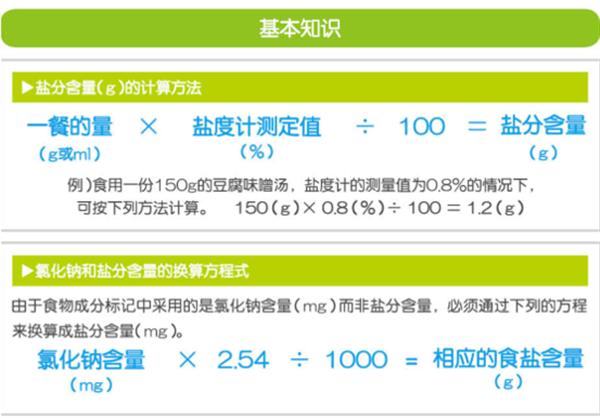Salt is a vital component in the human body, playing a key role in maintaining fluid balance, regulating osmotic pressure within and outside cells, and supporting the acidic environment needed for pepsin to function properly. It also helps maintain the pH balance of body fluids and supports normal circulation. The impact of salt intake on health is significant—too little salt can lead to low sodium levels, causing symptoms like loss of appetite, weakness, and dizziness. On the other hand, excessive salt consumption can increase the risk of serious health issues such as hypertension, stroke, and coronary heart disease.
Every year on National Hypertension Day, the theme focuses on "Salt and High Blood Pressure." This initiative aims to raise public awareness about the dangers of hypertension, encourage government and social sectors to pay more attention to this issue, and promote community involvement in prevention and treatment efforts. It also emphasizes the importance of self-care and education around blood pressure management.
Low sodium intake is a major risk factor for hypertension among the Chinese population. As people age, their likelihood of developing high blood pressure increases. For instance, among those aged 65–74, the prevalence of hypertension exceeds 40%, while the national average stands at around 10%. The rates vary by age group: 3.11% for those under 20, 3.91% for 20–29 years, 4.95% for 30–39 years, 8.60% for 40–49 years, 11.38% for 50–59 years, and 17.23% for 60–69 years. These statistics highlight the strong correlation between aging and increased risk of hypertension.
Reducing salt intake has been proven to lower blood pressure and decrease the risk of cardiovascular and cerebrovascular events. Digital salinometers, such as the PAL-Easy Salt device, are valuable tools that help individuals monitor and manage their salt consumption effectively. By tracking daily salt intake, these devices support better control of blood pressure and contribute to long-term health benefits.
For people with salt-sensitive hypertension, reducing sodium intake is especially crucial. Accurate assessment of salt consumption is essential, and using scientific tools can help ensure more precise management of dietary salt. Hospitals and healthcare providers often recommend setting daily salt targets, monitoring actual intake, and adjusting accordingly to achieve better health outcomes.
The ATAGO digital salinometer is one such tool that provides accurate readings, making it easier for individuals to track their salt consumption. By incorporating these technologies into daily routines, people can take proactive steps toward preventing hypertension and improving overall well-being.

Wireless Access Point (AP) is a new type of wireless network device, it is a network device based on Wi-Fi technology, can convert a wired network into a wireless network, so that you can easily access the network at home, office or public places. The feature of wireless ceilinged AP is that it uses ceilinged design, can be suspended on the wall top or ceiling, and can transmit the signal to a wider range, so that users can have more space in the same building.
Second, the advantages of wireless ceiling AP
1, the advantage of wireless ceiling AP is that it can better meet the requirements of various environments, can better meet the requirements of indoor space, can better meet the requirements of outdoor space, and can better meet the multi-level coverage area.
2, wireless ceiling AP can better meet the requirements of more network users, because it can better support multiple users, and can meet the connection of a variety of network devices, such as can support the connection of computers, smart phones, tablets and other devices.
3, wireless ceiling AP can better meet a variety of network security needs, because it can provide a variety of network security functions, including encrypted transmission, network isolation, access control, content filtering, authentication and other functions, can better protect network security.
Third, the application of wireless ceiling AP
Wireless ceiling AP can be widely used in homes, offices, companies, schools, hotels, restaurants, public places and other places to meet the network needs of different places.
1, Family: Wireless ceiling AP can better meet the network needs of the family, can make the family network coverage larger, family members can more convenient access to the network at home, more secure access to the network.
2, office: Wireless ceiling AP can meet the network needs of the office, can better meet the network needs of multiple users inside the office, can better meet the network needs of multiple users outside the office, can better support the office security network needs.
3, the company: wireless ceiling AP can better meet the company's network needs, can better meet the company's internal network needs of multiple users, can better support the company's security network needs, can better meet the company's external user network needs.
Fourth, the use of wireless ceiling AP
The installation of wireless ceiling AP is very simple, only need to install it on the wall top or ceiling, and then connect it to the network interface, and finally use its configuration software to complete the installation and setup, the use of wireless ceiling AP is very convenient, as long as the network function is enabled, you can allow multiple users to easily access the network in the same building.
Wifi 5 Ceiling Wireless Ap,Wifi Access Point Poe Ceiling Mount,Ceiling Mount Wifi Access Point Home,Access Point Enclosure Ceiling
Shenzhen MovingComm Technology Co., Ltd. , https://www.movingcommtech.com
